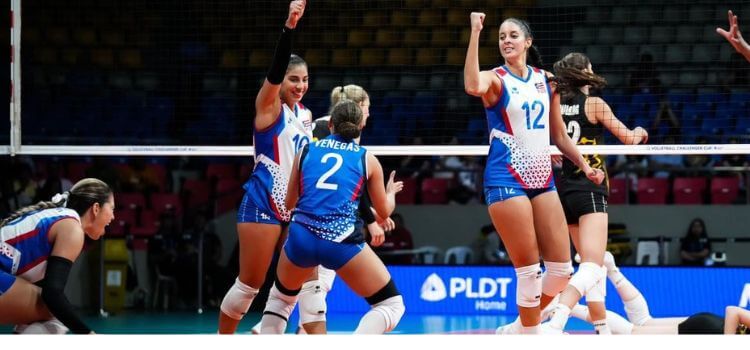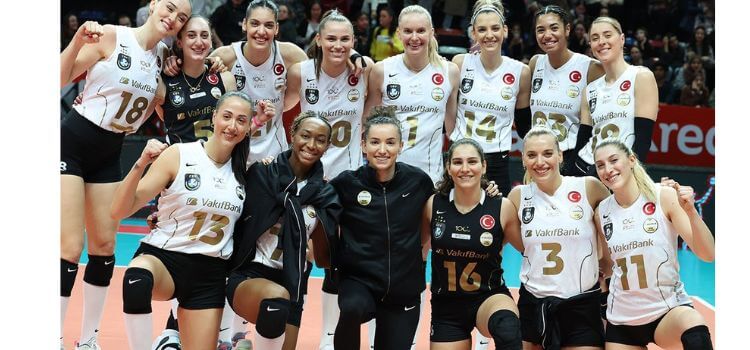As an Amazon Associate, I earn from qualifying purchases
Ankle injuries are one of the most common challenges volleyball players face, making ankle support essential for both amateurs and professionals alike. Whether you’re jumping, blocking, or diving, the risk of twisting or rolling your ankle is ever-present. That’s why ankle braces for volleyball players have become an essential piece of equipment on the court.
In this guide, we’ll cover the benefits of using ankle braces, key features to look for, and how they can enhance your performance while minimizing injury risks. If you’re serious about safeguarding your ankles and boosting your game, keep reading to discover everything you need to know about choosing the right ankle brace for volleyball.
Types of Ankle Braces
Rigid Ankle Braces
Rigid ankle braces are the go-to choice for those recovering from a severe ankle injury or looking for maximum support. These braces often have hard plastic or metal components that restrict movement, providing excellent stability.
Features: Typically includes a hard shell or frame, adjustable straps, and padding for comfort.
Best for Severe Injuries: Ideal for players who need to stabilize an injured ankle to prevent further damage.
Semi-Rigid Ankle Braces
Semi-rigid braces offer a balance between mobility and support. They’re perfect for players who need more flexibility but still require a decent level of protection.
Features: Combines soft materials with rigid elements, often with adjustable straps for a custom fit.
Best for Moderate Support: Suitable for players with a history of minor ankle injuries or those in recovery.
Soft Ankle Braces
Soft ankle braces are made from elastic or neoprene materials, providing mild support. They are less restrictive and are primarily used for preventive measures or to offer slight compression.
Features: Elastic or neoprene construction, slip-on design, and lightweight.
Best for Mild Support and Prevention: Ideal for players looking to prevent injuries rather than treat existing ones.
Lace-Up Ankle Braces
Lace-up braces offer customizable support, allowing the user to tighten or loosen the brace as needed. These braces are versatile and provide a snug fit, making them popular among volleyball players.
Features: Lace-up design, adjustable tension, and often includes side supports.
Best for Custom Fit: Provides personalized comfort and support, suitable for various levels of injury.
17 best Ankle Braces for Volleyball Players

1. Sleeve Stars Ankle Support for Ligament Damage & Sprained Ankle
Key Features:
- Provides support for ligament damage, sprained ankles, plantar fasciitis, and Achilles tendonitis.
- Adjustable compression for a customized fit.
- Suitable for both men and women.
Materials:
- Made from breathable, moisture-wicking fabric.
- Durable elastic material.
Benefits:
Pros:
Cons:
- Potential sizing issues.
- Limited color options.
2. Bodyprox Ankle Support Brace, Breathable Neoprene Sleeve
Key Features:
Materials:
- Breathable neoprene for moisture control.
- Durable Velcro straps for secure fit.
Benefits:
- Helps reduce pain and swelling.
- Suitable for everyday wear and light sports activities.
Pros:
- Easy to adjust.
- Affordable.
Cons:
- May not provide enough support for severe injuries.
- Neoprene may cause skin irritation for some users.
3. TechWare Pro Ankle Brace Compression Sleeve
Key Features:
Materials:
- Made from breathable and moisture-wicking fabric.
- Elastic material for snug fit.
Benefits:
Pros:
Cons:
- Sizing can be tricky.
- May wear out quickly with frequent use.
4. Med Spec ASO Ankle Stabilizer
Key Features:
Materials:
- Ballistic nylon for durability.
- Elastic cuff closure for added support.
Benefits:
Pros:
Cons:
- Bulkier than some other braces.
- More expensive than basic options.
5. Zenith Ankle Brace, Lace Up Adjustable Support
Key Features:
- Lace-up design for a custom fit.
- Provides support for running, basketball, and injury recovery.
- Suitable for men, women, and children.
Materials:
- High-quality fabric with reinforced stitching.
- Strong laces for a secure fit.
Benefits:
Pros:
Cons:
6. Z ATHLETICS Zenith Ankle Brace, Lace Up Adjustable Support
Key Features:
Materials:
- Strong, breathable fabric.
- Reinforced with high-quality laces.
Benefits:
Pros:
Cons:
- May feel bulky under certain shoes.
- Can be difficult to adjust the laces for a perfect fit.
7. Bodyprox Ankle Support Brace 2 Pack
Key Features:
Materials:
- Made from breathable neoprene.
- Adjustable Velcro straps.
Benefits:
- Offers support during sports and physical activities.
- Reduces pain and swelling from minor injuries.
Pros:
Cons:
- Limited support for severe injuries.
- One size may not fit everyone comfortably.
8. ComfiLife Ankle Brace for Men & Women
Key Features:
Materials:
- Breathable, moisture-wicking fabric.
- Strong elastic for secure fit.
Benefits:
Pros:
Cons:
9. Foot Sleeve with Compression Wrap
Key Features:
Materials:
- Breathable and stretchy fabric.
- Elastic band for additional compression.
Benefits:
Pros:
- Lightweight and easy to wear.
- Provides a good balance of support and flexibility.
Cons:
- Limited sizing options.
- May wear out quickly with heavy use.
10. McDavid Ankle Brace with Cross Straps
Key Features:
Materials:
- Durable and breathable fabric.
- Elastic cross straps for secure fit.
Benefits:
- Provides strong support for severe injuries.
- Enhances stability and reduces pain.
Pros:
Cons:
- Can be bulky under shoes.
- More expensive than basic options.
11. Adjustable Ankle Stabilizer
Key Features:
Materials:
- Breathable nylon material.
- Elastic straps for added support.
- Helps stabilize weak or injured ankles.
- Suitable for everyday use and sports activities.
Pros:
Cons:
- One size may not fit all.
- May not provide enough support for severe injuries.
12. Ankle Support, Adjustable Ankle Brace
Key Features:
Materials:
- Breathable nylon with elastic properties.
- Comfortable and stretchy material.
Benefits:
- Provides support for sprains, tendonitis, and other ankle injuries.
- Comfortable and easy to wear.
Pros:
Cons:
- May not be suitable for very large or very small feet.
- Limited support for severe injuries.
13. SNEINO Ankle Brace for Women & Men
Key Features:
- Materials:
Benefits:
Pros:
Cons:
- May feel bulky under some shoes.
- Only available in medium size.
14. Vinaco 2 Pack Breathable & Strong Ankle Brace
Key Features:
Materials:
Benefits:
Pros:
Cons:
- One size may not fit all comfortably.
- May not provide sufficient support for severe injuries.
15. Ankle Brace, Ankle Support for Women & Men
Key Features:
Materials:
- High-quality, stretchy, and breathable fabric.
- Elastic ankle strap for enhanced support.
Benefits:
Pros:
Cons:
- Limited to large size, which may not fit all users.
- The ankle strap might not stay securely in place during intense activities.
16. ACE Brand Deluxe Adjustable Ankle Stabilizer
Key Features:
Materials:
Benefits:
Pros:
Cons:
17. gonicc Professional Foot Sleeve (Pair) with Compression Wrap Support
Key Features:
Materials:
- Breathable and elastic fabric.
- Compression wrap made of durable elastic material.
Benefits:
Pros:
- Lightweight and comfortable for all-day wear.
- Effective for sports and daily activities.
Cons:
- May not provide enough support for severe injuries.
- Sizing may be an issue for some users.
Conclusion
When it comes to preventing injuries and staying at the top of your game, investing in a high-quality ankle brace can make all the difference. By offering stability, support, and protection, the right brace allows volleyball players to perform confidently and efficiently, while reducing the likelihood of ankle injuries.
With the right fit and features, ankle braces can truly elevate your game and prolong your athletic career. Take the time to choose a brace that matches your needs, and make safety a priority on the court.
FAQ
- Why do volleyball players need ankle braces?
Ankle braces provide crucial support and stability, reducing the risk of ankle sprains, twists, or injuries during sudden movements like jumping, landing, or lateral shifts. They are especially important in volleyball, where the fast-paced nature of the game puts stress on the ankle joints. - What are the best types of ankle braces for volleyball players?
The best ankle braces for volleyball are typically lace-up, stirrup, or sleeve braces. Lace-up braces offer maximum support and adjustability, while stirrup braces provide rigid protection. Sleeve braces are more lightweight and ideal for mild support and compression. - How do I choose the right size for my ankle brace?
To choose the right size, measure the circumference around your ankle and compare it to the manufacturer’s sizing chart. Proper fit is crucial for comfort and effectiveness; a brace that is too loose won’t offer enough support, while one that is too tight could restrict movement or circulation. - Can wearing an ankle brace prevent all injuries?
While ankle braces significantly reduce the risk of ankle injuries, they can’t guarantee complete protection. It’s still important to warm up properly, strengthen your ankle muscles, and use good technique during play to minimize injury risk. - Should I wear an ankle brace during every volleyball game or practice?
If you’ve had a previous ankle injury or feel instability during play, it’s recommended to wear an ankle brace for added protection. Some players opt to wear them as a preventative measure, especially during competitive games or intensive practice sessions. - How long can I wear an ankle brace during volleyball?
You can wear an ankle brace throughout your game or practice session. However, if you feel any discomfort, swelling, or restricted blood flow, it’s important to take a break and readjust or consult a professional to ensure you’re using the right type of brace. - Are ankle braces comfortable to wear?
Modern ankle braces are designed for comfort as well as support. Look for breathable, lightweight materials, and ensure the brace fits snugly without restricting movement or causing irritation. Over time, most players adjust to wearing them without any discomfort.

















